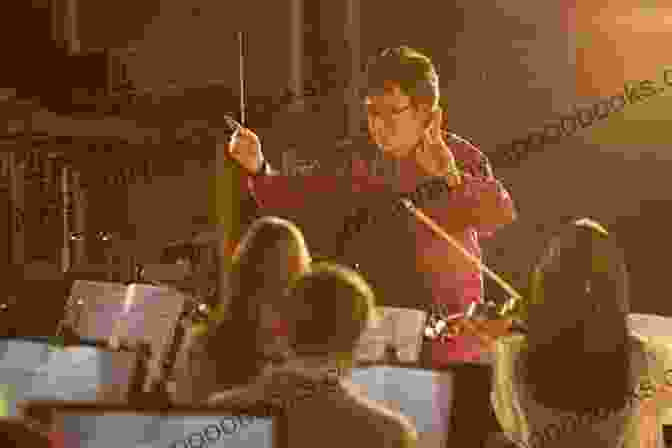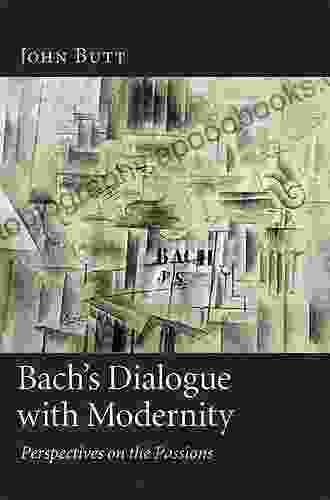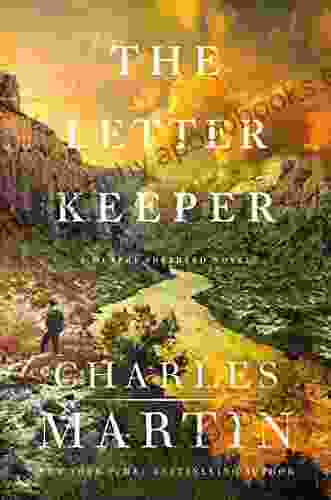The Cambridge Companion To Conducting: A Comprehensive Guide to the Art of Leading Performances


Music is a powerful force that can evoke emotions, inspire thoughts, and bring people together. It has the ability to transcend cultural barriers and create a shared experience for listeners and performers alike. At the heart of every great musical performance is a conductor, a skilled musician who leads the ensemble and guides their interpretation of the music.
4.2 out of 5
| Language | : | English |
| File size | : | 10093 KB |
| Text-to-Speech | : | Enabled |
| Screen Reader | : | Supported |
| Enhanced typesetting | : | Enabled |
| Word Wise | : | Enabled |
| Print length | : | 370 pages |
The art of conducting is a complex and fascinating one, and it requires a deep understanding of music, a keen ear, and the ability to communicate effectively with musicians. In "The Cambridge Companion to Conducting," a comprehensive guide to this essential musical practice, renowned conductors, composers, and scholars share their perspectives on the art of leading performances.
The Role of the Conductor
The conductor plays a vital role in shaping the sound and interpretation of a musical performance. They are responsible for setting the tempo, dynamics, and phrasing of the music, and for ensuring that the ensemble plays together in a cohesive manner.
In addition to their musical skills, conductors must also be effective communicators. They need to be able to clearly convey their intentions to the musicians, and to create a positive and supportive working environment.
Conducting Techniques
There are a variety of conducting techniques that conductors use to communicate with musicians. These techniques include hand gestures, facial expressions, and body language.
Hand gestures are the most important tool that conductors use. They can be used to indicate the tempo, dynamics, and phrasing of the music, and to cue the entrances of different instruments or sections.
Facial expressions and body language can also be used to communicate with musicians. A conductor's facial expression can convey a range of emotions, from joy to anger, and their body language can be used to emphasize the shape and flow of the music.
Musical Interpretation
The conductor's interpretation of the music is a key factor in shaping the sound and feel of a performance. Conductors bring their own unique perspectives to the music, and their interpretations can vary widely.
When interpreting the music, conductors must consider a variety of factors, including the composer's intentions, the style of the music, and the capabilities of the ensemble. They must also be able to adapt their interpretation to the specific circumstances of each performance.
The Conductor and the Orchestra
The relationship between the conductor and the orchestra is a complex one. The conductor is the leader of the orchestra, but they are also dependent on the musicians to play the music well.
A successful conductor is able to build a strong rapport with the orchestra, and to create a positive and supportive working environment. They are also able to inspire the musicians to play their best, and to achieve a shared musical vision.
The Art of Conducting: A
The art of conducting is a challenging and rewarding one. It requires a deep understanding of music, a keen ear, and the ability to communicate effectively with musicians.
For those who are passionate about music, and who have the desire to lead others in creating beautiful performances, a career in conducting can be a fulfilling and rewarding one.
Further Reading
If you are interested in learning more about the art of conducting, there are a number of resources available.
- The Cambridge Companion to Conducting
- The Art of Conducting
- Conducting for Dummies
There are also a number of conducting workshops and masterclasses available, which can provide you with the opportunity to learn from experienced conductors.
With hard work and dedication, you can develop the skills and knowledge necessary to become a successful conductor.
4.2 out of 5
| Language | : | English |
| File size | : | 10093 KB |
| Text-to-Speech | : | Enabled |
| Screen Reader | : | Supported |
| Enhanced typesetting | : | Enabled |
| Word Wise | : | Enabled |
| Print length | : | 370 pages |
Do you want to contribute by writing guest posts on this blog?
Please contact us and send us a resume of previous articles that you have written.
 Book
Book Novel
Novel Page
Page Chapter
Chapter Text
Text Story
Story Genre
Genre Reader
Reader Library
Library Paperback
Paperback E-book
E-book Magazine
Magazine Newspaper
Newspaper Paragraph
Paragraph Sentence
Sentence Bookmark
Bookmark Shelf
Shelf Glossary
Glossary Bibliography
Bibliography Foreword
Foreword Preface
Preface Synopsis
Synopsis Annotation
Annotation Footnote
Footnote Manuscript
Manuscript Scroll
Scroll Codex
Codex Tome
Tome Bestseller
Bestseller Classics
Classics Library card
Library card Narrative
Narrative Biography
Biography Autobiography
Autobiography Memoir
Memoir Reference
Reference Encyclopedia
Encyclopedia Bill Blume
Bill Blume Ellen Anderson
Ellen Anderson Kevin Dawe
Kevin Dawe D L Orton
D L Orton Alannah Hopkin
Alannah Hopkin Radha Vatsal
Radha Vatsal Peter Adcock
Peter Adcock Christopher P Loss
Christopher P Loss Albert Memmi
Albert Memmi Emily S Wu
Emily S Wu Ava Richardson
Ava Richardson Geoffrey Stevens
Geoffrey Stevens Eve Gaddy
Eve Gaddy Alan R Longhurst
Alan R Longhurst Albert Schweitzer
Albert Schweitzer Alain Marez
Alain Marez David S Sorenson
David S Sorenson Henry Hallam
Henry Hallam Donna M
Donna M Jo Wood
Jo Wood
Light bulbAdvertise smarter! Our strategic ad space ensures maximum exposure. Reserve your spot today!

 Felix CarterUnravel the Enigmatic Past: Rebecca Cantrell's "On the Train" Explores a Lost...
Felix CarterUnravel the Enigmatic Past: Rebecca Cantrell's "On the Train" Explores a Lost... Colt SimmonsFollow ·2.3k
Colt SimmonsFollow ·2.3k Pete BlairFollow ·15.2k
Pete BlairFollow ·15.2k Jace MitchellFollow ·13.1k
Jace MitchellFollow ·13.1k Alexander BlairFollow ·19.1k
Alexander BlairFollow ·19.1k Chris ColemanFollow ·5.5k
Chris ColemanFollow ·5.5k Desmond FosterFollow ·15.9k
Desmond FosterFollow ·15.9k Kirk HayesFollow ·9.7k
Kirk HayesFollow ·9.7k Mario BenedettiFollow ·17.4k
Mario BenedettiFollow ·17.4k

 W. Somerset Maugham
W. Somerset MaughamBach Dialogue With Modernity: A Journey Through Time and...
Prelude: Bach's Timeless...

 Ted Simmons
Ted SimmonsAsher Heroes At Heart Maryann Jordan: The Essential Guide...
Are you ready to...

 Paulo Coelho
Paulo CoelhoVienna Spies: Uncover the Hidden World of Espionage in...
Vienna has long...

 Herman Melville
Herman MelvilleThe Complete Guide to Orchestral Cymbal Playing:...
Step into the vibrant...

 Rubén Darío
Rubén DaríoEscape into a Holiday Haven with California Christmas...
Embark on a heartwarming and festive journey...
4.2 out of 5
| Language | : | English |
| File size | : | 10093 KB |
| Text-to-Speech | : | Enabled |
| Screen Reader | : | Supported |
| Enhanced typesetting | : | Enabled |
| Word Wise | : | Enabled |
| Print length | : | 370 pages |











